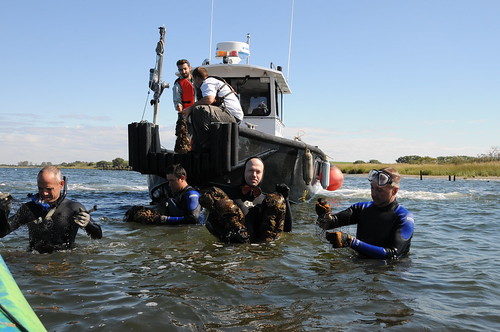FOR IMMEDIATE RELEASE 18-83 $12 Billion Investment Pays Off: Report Confirms Health of New York Harbor Continues to Improve2017 New York Harbor Water Quality ReportPhotos Available on DEP’s Flickr PageNew York City Department of Environmental Protection (DEP) Commissioner Vincent Sapienza today released the 2017 New York Harbor Water Quality Report. Data confirms that New York Harbor is the healthiest it has been in nearly 110 years of testing, owed to the aggressive expansion of the nation’s most ambitious green infrastructure program and a robust capital program that is upgrading wastewater treatment plants and sewers. DEP has invested more than $12 billion on these efforts over the last decade and, moving forward, will invest more than $4.4 billion to implement a series of cleanup plans for the Gowanus Canal, Newtown Creek, Flushing Bay, the Bronx River and other local waterways. “With 522 miles of shoreline, New York City’s waterways are one of our greatest assets,” said Commissioner Sapienza. “As a protector of public health and the environment, DEP is leading efforts to restore New York Harbor’s natural ecology, from building green infrastructure and separating sewers, to significantly reducing nitrogen discharges and reconstructing acres of natural wetlands. These investments have paid off and we’re now seeing plant and animal species returning to our waterways in numbers we haven’t seen in decades.” “It is encouraging to see the renewed health of New York Harbor, which made this City what it is in so many ways,” said Council Member Costa Constantinides, Chair of the Committee on Environmental Protection. “We must continue building on these promising results to ensure our defining waterways are healthy in the decades to come. I look forward to working with DEP on ways to make that happen.”Report Highlights
New York City has monitored the waterways of New York Harbor for more than a century through its Harbor Survey Program. The Survey was initiated in 1909 in response to public outcry over water pollution, and sought to study the relationship between wastewater and harbor water quality. By this time, New York Harbor had long-served as a global hub for commerce and industry and, due to high levels of pollution and bacteria, had lost the ability to support wildlife and recreation. The City would eventually construct 14 wastewater treatment plants to accommodate a growing population and the Harbor Survey Program has also since expanded to include 89 monitoring stations in both tributaries and open water. As the largest municipal water and wastewater utility in the country, DEP carries out an expansive environmental mission and continues to be an industry leader by using a multipronged approach to protect waterbodies both in and around New York by capturing stormwater before it ever enters the sewer system, funding advanced wastewater collection and treatment system upgrades, separating sewers, reducing nitrogen discharge, restoring lost wetlands to serve as a critical natural filter, and cultivating partnerships with environmental advocates and community leaders who share our commitment to the natural world. Not only are species returning in greater numbers, but water quality in New York Harbor has improved to the point that many waterways are now utilized for recreation throughout the year. To learn more about New York City’s harbor water quality and the City’s on-going efforts to improve it, the full harbor water report can be viewed on DEP’s website. DEP manages New York City’s water supply, providing more than 1 billion gallons of water each day to more than 9 million residents, including 8.6 million in New York City. The water is delivered from a watershed that extends more than 125 miles from the city, comprising 19 reservoirs and three controlled lakes. Approximately 7,000 miles of water mains, tunnels and aqueducts bring water to homes and businesses throughout the five boroughs, and 7,500 miles of sewer lines and 96 pump stations take wastewater to 14 in-city treatment plants. DEP has nearly 6,000 employees, including almost 1,000 in the upstate watershed. In addition, DEP has a robust capital program, with a planned $19.4 billion in investments over the next 10 years that will create up to 3,000 construction-related jobs per year. For more information, visit nyc.gov/dep, like us on Facebook, or follow us on Twitter. | ||
